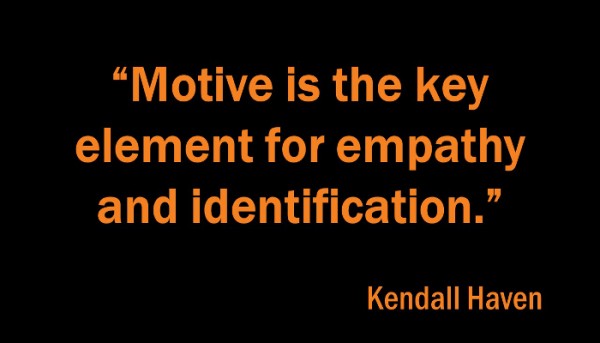
The little boy escaped his dad’s grasp and ran toward the restaurant’s revolving door. Three teenagers, who’d crammed themselves into one of its pie-shaped wedges, pushed hard—transforming a once harmless portal into aluminum jaws that closed rapidly on the little boy’s reaching arm. As the only person close enough to do anything about it, I found myself caught in a dilemma. Should I act on my instinct to protect the child or respect a social rule to never touch a stranger’s kid?
The teenagers pushed. The gap narrowed. And I had milliseconds to make a decision.
![]()
New business storytellers make a common mistake: they invest more time on a story’s roles and events than on the actual influences that shape them. And by shortchanging the things that drive character behavior, they also squander the best opportunity to impress their audiences.
Experienced business storytellers, though, understand the power of the throughline (StoryHow PitchDeck Card #40.). Throughline is a character’s motivation to accomplish a goal. It’s the driving force that remains constant throughout the entire story, independent of the obstacles that inhibit a character’s progress toward achieving that goal.
Story researcher Kendall Haven agrees. His experiments have revealed that one story element above all others has the most impact on an audience.
“When you use more powerful motives to turn a goal from a mere want to an absolute necessity, you instantly create audience interest, empathy, and support. Motives link directly to both the head and the heart of an audience.”1
![]()
I grabbed the boy’s jersey and pulled hard, causing the little guy to slide across the linoleum floor. The good news is that I’d successfully removed him from harm. The bad news is that I’d simultaneously placed myself into it, as his Mom locked her laser-like gaze onto the brute who’d just tossed her baby across the restaurant floor like a rag doll. Luckily for me, Dad saw the whole thing and intercepted mama bear before she could commence my mauling. While Mom struggled violently to break herself free of Dad’s bear hug, he looked at me and mouthed the words, “Thank you.”
Rather than risk my life on Dad’s ability to restrain the wiry woman, I lengthened my stride, spun through the revolving door, and sprinted toward the relative safety of my car.
![]()
There are always at least two stories: the one being told and the one being heard. In this example, two people saw the same event, yet interpreted them differently. Dad had enough knowledge of the situation to understand my motivation to protect. With only partial information, however, Mom could only assume something more nefarious.
So, what is your motivation as a business storyteller? Is it to be helpful? Is it to cram products down people’s throats? Now, take a step back and ask yourself, “Am I sure that the audience shares my view?” In other words, do they know your real motivation like the boy’s Dad, or are they assuming their own like his Mom?
Spend time developing the most important of all story elements: the throughline.
Notes:
- Haven, Kendall (2014-10-14). Story Smart: Using the Science of Story to Persuade, Influence, Inspire, and Teach (pp. 87). ABC-CLIO. Kindle Edition.